I know a friend in New York who likes to do spot trading and occasionally trades contracts, particularly keen on bottom fishing, adding positions as it drops; in just a few years, he has grown from small to large, now making a living by trading coins.
I have improved his 'Trading Strategy - Bullish Candlestick Patterns' and practiced it this year. In less than a year, with an initial capital of 1 million, I have turned it into 80 million. Now I share it, hoping it helps my fans!

First, forget those complex quantitative models; the real way to make money is actually these few 'simple rules':
1. Buy mainstream value coins in large positions, spot (do not trade contracts), regardless of whether they rise or fall, hold them for the medium to long term based on the entry price, combined with the rolling strategy (adding or reducing positions).
When the market experiences a sharp drop, don't panic if the four-hour line doesn't break the 20-day line; there are several reasons:
a. Exploding contracts: without the right tools, do not easily play contracts; they are completely different from spot data. Preserving capital is essential to continue enjoying the benefits of the bull market!
b. Pullback demand: mainstream value coins typically pull back to the 5-day line after a surge, often needing to retest the 5-day line or even the 10-day line before continuing to rise!
c. Cutting losses: retail investors are often eager to chase highs and sell lows; after retail investors chase high, operators will quickly drop the price to scare them into cutting losses and handing over their shares.
2. For profitable swing trades, reduce positions in advance or sell in batches at high points to lock in profits.
3: Set up ahead of time at the daily level on the 5-day, 10-day, and 30-day moving averages to buy in batches at low levels.
4: Use the lifeline strategy to assess the trend of rises and falls. If the trend changes and effectively breaks down, pull back to the lifeline to timely reduce positions.
5. When there is a surge, be aware of the risks, do not blindly chase highs. When there is a sharp drop, be aware of opportunities and buy in batches at low levels.
6: Take profits from winning chips, reduce positions moderately, avoid rollercoaster trading, for bottom-fishing orders, it is recommended to set stop losses to preserve capital.
7: If the direction is unclear, it is better to miss out than to make a mistake; preserve capital to smile longer.
8. New members must not rush to make money, let alone be greedy. First, learn seriously, refine your skills, practice with small funds, familiarize yourself with the ups and downs of cryptocurrency trading, find your feel for the market, and reduce trading costs during learning and practice!
In this bull market, if you have 500,000 U and want to push to 10 million U, it relies not on the luck of being 'the chosen one', but on a complete system of extreme restraint + extreme aggressive rolling.
The secret to success is just one sentence: preserve capital, let profits soar.
[Step 1] Choose coins: only focus on 'main upward trend coins'
Capital should not be spread thin; focus fire on 'trend + control' coins:
Break above previous highs, increase in volume: for example, SOL breaking $25, it surged 5 times before retail investors could react.
Segment leading sectors: MEME, AI, Layer 2; do not choose 'new wine in old bottles' pseudo-hotspots.
Low circulation, easy to pump: market cap between 100 million and 1 billion U, easy for the operator to control and pump.
[Step 2] Rolling strategy: only use profits to add positions, capital only enters and does not exit.
500,000 U is not looking to double overnight, but to advance step by step:
First trade: 200,000 trial position; the signal must be clear—breakout + volume (e.g., PYTH breaks 0.6).
Stop loss: cut losses at 10%, no emotions, preserve capital.
Add positions after a 50% gain: reinvest 300,000 (capital + profits) to catch the main upward wave.
After doubling, fully roll in: 1 million U to impact 3-5 times, do not be greedy, do not hesitate.
Take profits at a 15% pullback, holding the rest until the end.
Key discipline: never add positions when losing, only scale up when winning.
[Step 3] Ironclad Rule for Position Management: Roll 20 times, do not rely on courage but on restraint.
No single coin should exceed 40% of the total position: at any time, do not put all your eggs in one basket.
Double profits and withdraw the principal: when going from 500,000 to 1 million, first withdraw 500,000 to secure the base.
Each stop loss should not exceed 5-10% of the total position: when it drops to the expected level, cutting losses is winning.
Those who can truly reach 10 million are not the ones who are best at reading candlesticks, but those who can resist temptation and control their hands. The market offers opportunities, but profits belong only to those with a system, discipline, and enough ruthlessness.
You can also roll over, but ask yourself: it's not about whether you have 500,000, but whether you have the patience and determination to execute it to the end.
In this market, the more you want to win quickly, the easier it is to lose badly.
That's how I was; I read a lot of books, drew diagrams, reviewed until midnight every day, but the account just didn't move—either losing or fluctuating repeatedly.
Until one day, a senior who had been doing this for seven or eight years told me: small cleverness does not last long; honestly following the simple methods is the way to survive.
What does it mean? Just four words: enter in batches.
Buy a little first, buy more if it drops, slowly accumulate in the bottom oscillation zone; when the trend emerges, push a bit more to release profits. If the market does not perform, exit early with a stop loss, without hesitation.
With this one method, I rolled from 200,000 to tens of millions in two years. I didn't catch any so-called dark horse coins, nor did I rely on a single doubling. It was all about discipline + rhythm, built up bit by bit.
This method has no tricks, nor is it stimulating. But the biggest advantage is: do not bet on direction, do not pressure heavy positions, do not rely on fate.
As long as you are willing to execute, even if you don't earn much at once, after ten or twenty times, the account will start to change.
But most people can't stand it? When the market moves, they go all in, chase up on rises, cut losses on drops, and every day want to win big money, only to find themselves stuck.
So I advise you: don't rush, don't gamble, don't pretend to understand. Learn to be a bit 'dumb', and you may go further.
Really give it a try, not for explosive profits, but to move steadily. Once this move is made, you will naturally know if it is worth it.
In this market, what you lack is not effort or opportunity, but someone who can help you achieve consistent profits.
Learn to follow trades.
"Trading Strategy - Bullish Candlestick Patterns" has been improved by me and practiced this year; in less than a year, with an initial capital of 1 million, I have turned it into 80 million. Now I share it, hoping it helps my fans!
Whether you trade stocks, forex, or cryptocurrencies, we will focus on how to use bullish candlestick patterns to create your own trading strategy and how to apply them in practice.
First, let's find out the real principles behind these bullish candlestick patterns.

Written by Jet Toyco, senior trader
The truth behind bullish candlestick patterns
Before we delve into the technical concepts and strategies of this article, you must first understand the truth behind them.
In fact, bullish candlestick patterns are essentially chart patterns at lower time frames.
Bullish engulfing in the daily time frame for EUR/USD:
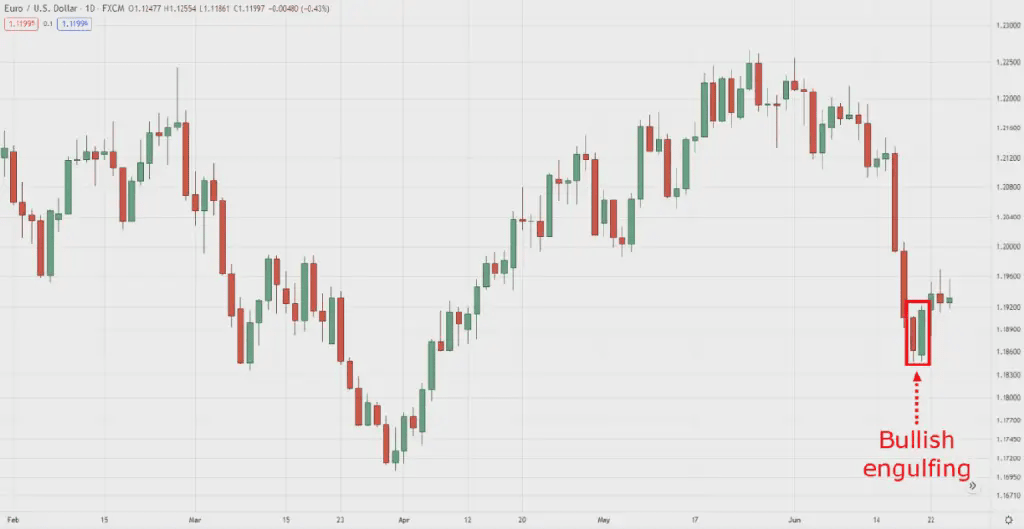
Head and shoulders reversal pattern in the 1-hour time frame for EUR/USD:
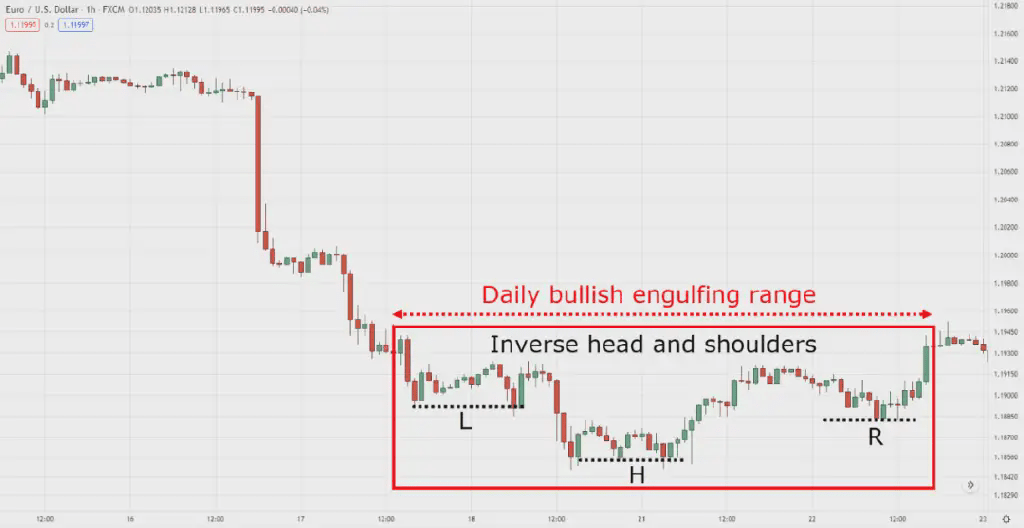
This means that for every bullish candlestick pattern seen at lower time frames, there is always a 'story', a 'battle' between buyers and sellers.
Why is this important?
The reasons are as follows:
Many traders may over-focus on specific candlestick patterns before entering trades.
"Oh, I must wait for a bullish engulfing pattern before I can enter the trade."
"Morning star candlestick pattern? Uh, I would rather wait for a hammer candlestick pattern."
Additionally, bullish candlestick patterns may be irregular.
At lower time frames, the chart can display double bottom patterns...
Double bottom pattern in the 1-hour time frame for US stock UEC:
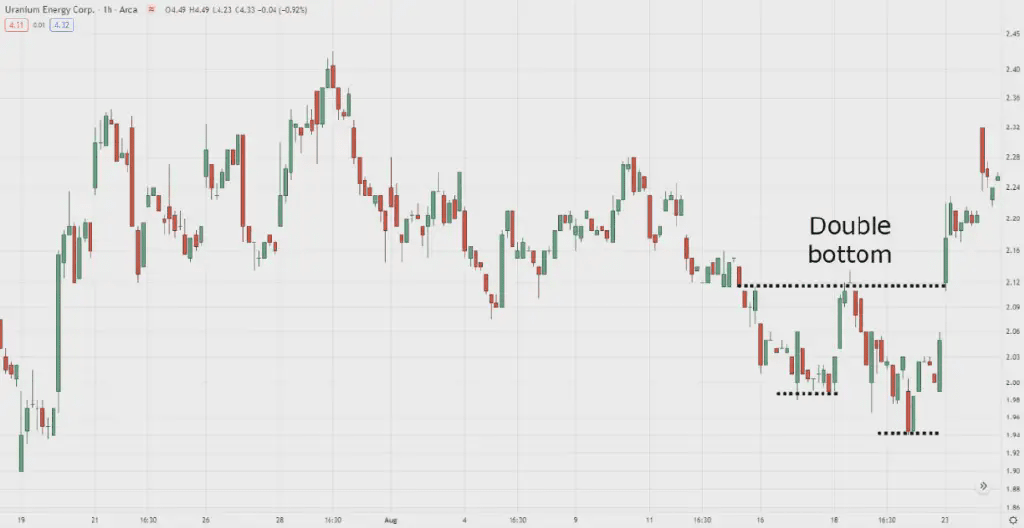
But in higher time frames, the entire pattern looks like this.
Double bottom pattern on the 1-hour chart in the daily time frame for UEC:
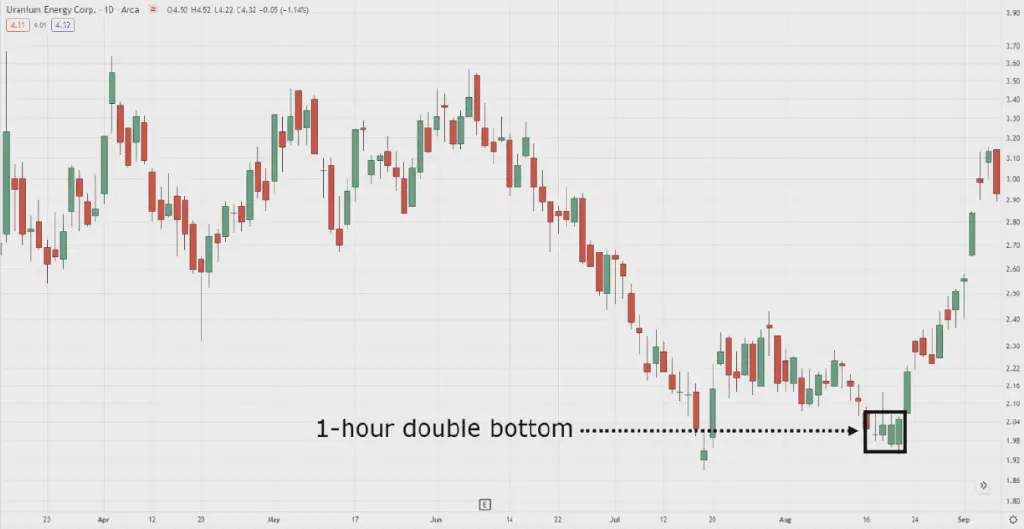
Bullish candlestick pattern in the daily time frame for UEC:
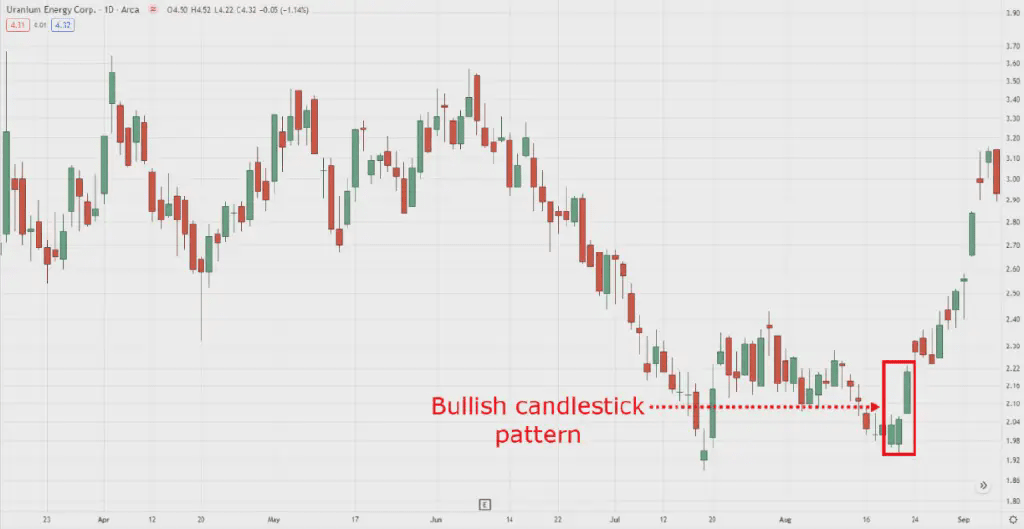
Would you still consider it a bullish candlestick pattern?
Of course!
So by now, you should know what a 'true' bullish candlestick pattern is (similarly, it can be irregular).
So how do you use them?
How to find high-probability bullish candlestick patterns for trading?
To have a complete trading strategy or a well-rounded trading business, it is important to determine the following three things:
Trading Method
Trading Setup
Trade Management
Bullish candlestick patterns are intended to determine the timing of entering and exiting trades.
On the other hand, if you spend too much time understanding your entry and exit but don't know you are a trader...
Then, regardless of how high the bullish probability of your candlestick pattern is, you can expect inconsistent results.
This means that bullish candlestick patterns should be just a small part of the equation and should not be traded in isolation.
Therefore, let's understand how to trade bullish candlestick patterns from top to bottom.
1. Trading Method
The trading method is the key first step to achieving consistency in what you want to get from the market.
So, if you are someone who wants to catch a wave of momentum or likes a fixed target...
Then swing trading might be suitable for you.
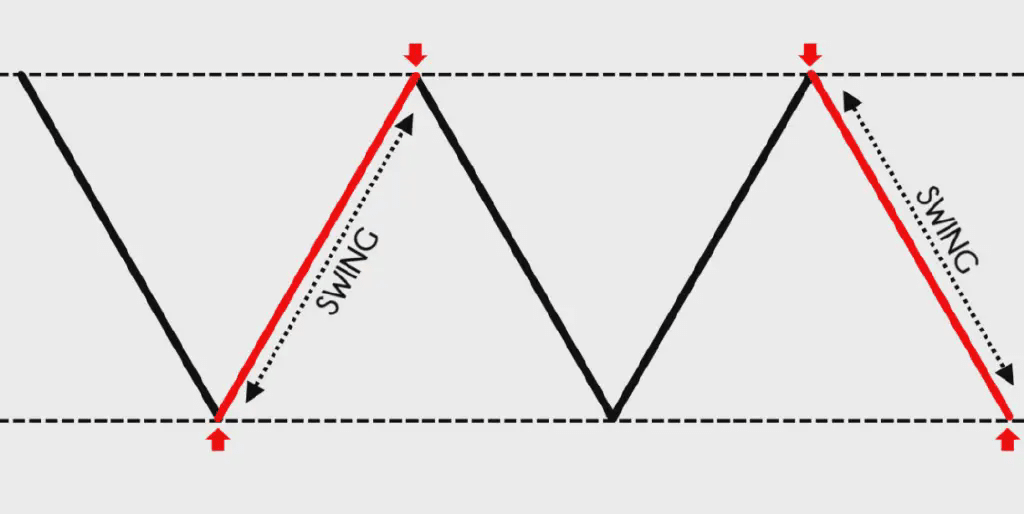
On the other hand, if you are someone who wants to capture long-term trends and likes to use trailing stops...
Then trend following might suit you.
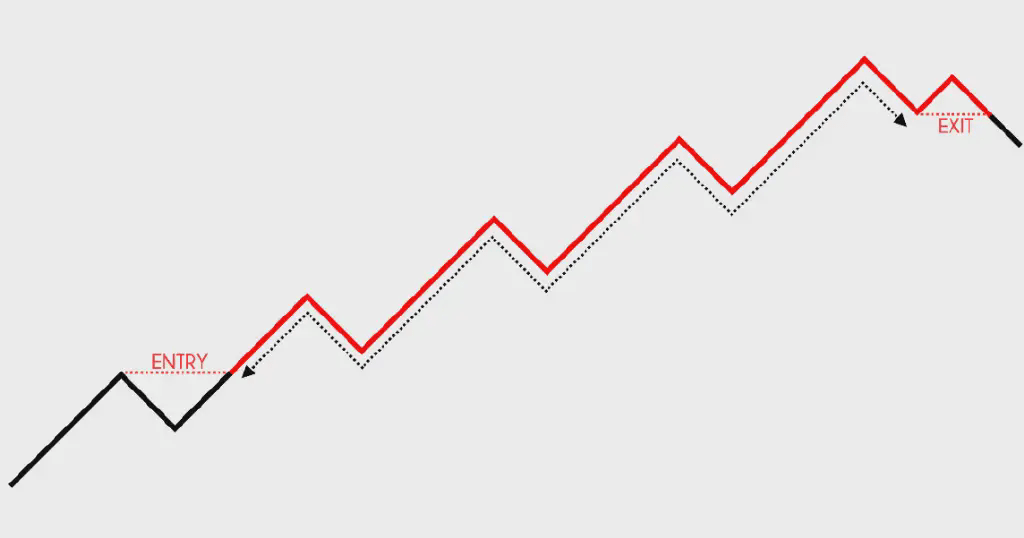
Nevertheless, there is no 'best' trading method in the world, but there is a trading method that suits you best.
So you may ask: how do you know what is best?
Of course, this requires a lot of trial and error!
Only by knowing what you don't want can you know what you truly want!
This takes time and energy, but that's the whole point of trading—a journey.
2. Trading Setup
Whether you use indicators or other tools to enter trades, it usually comes down to these two:
Pullback setups.
Breakout setups.
Trading breakouts means you are looking for confirmation.
Breakout in the 8-hour time frame for USD/JPY:
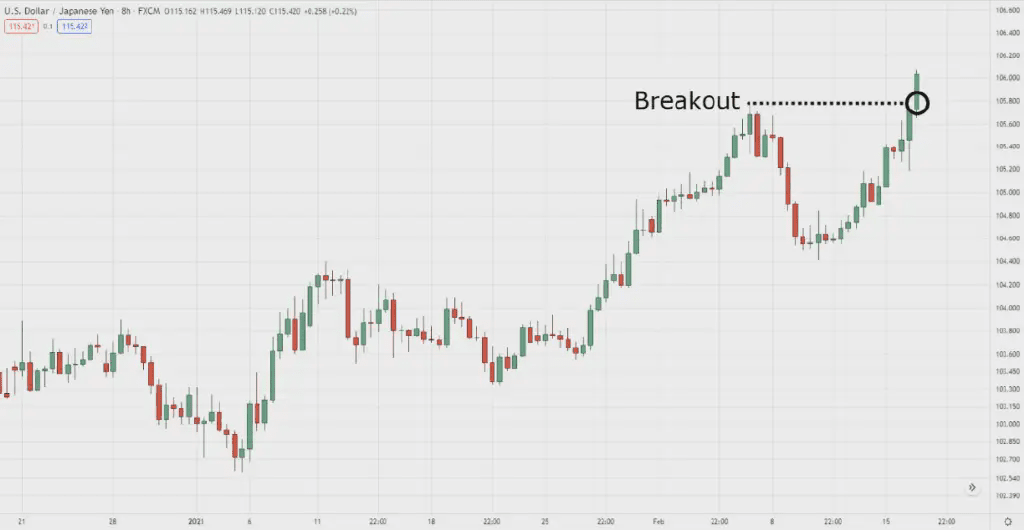
However, the downside is that it can turn into a 'false breakout'.
False breakout in the 8-hour time frame for USD/JPY:
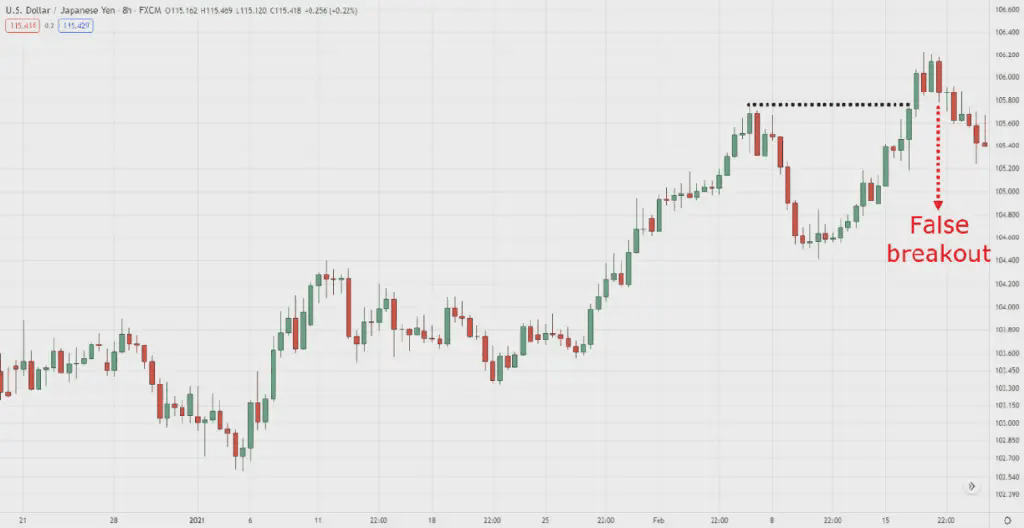
Moreover, you want the risk-reward ratio to become more flexible.
Poor risk-reward ratio breakout setup in the 8-hour time frame for GBP/AUD:
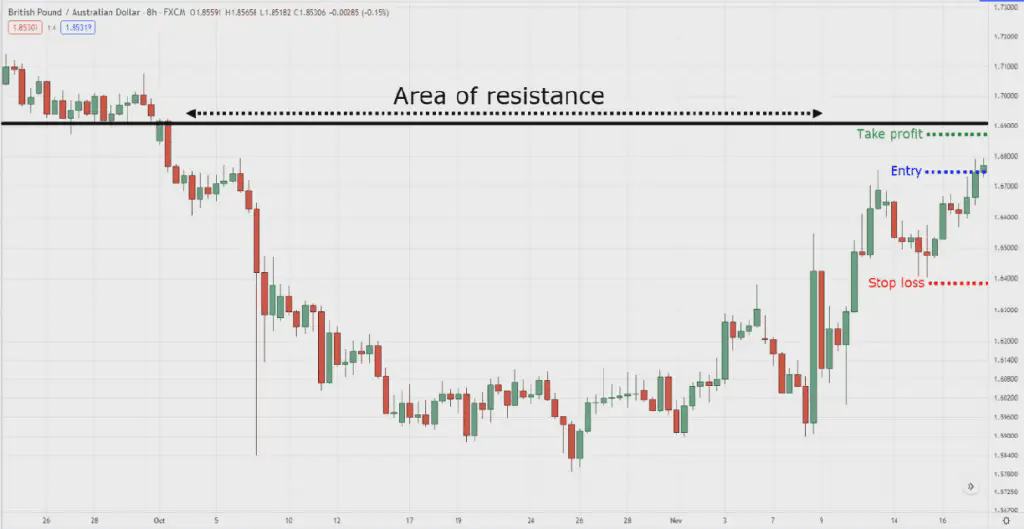
On the other hand, buying during a pullback means you are waiting for the right price to appear before making a trade.
It's like waiting for oil prices to drop before filling up the tank!
Pullback setup in the 8-hour time frame for AUD/USD:
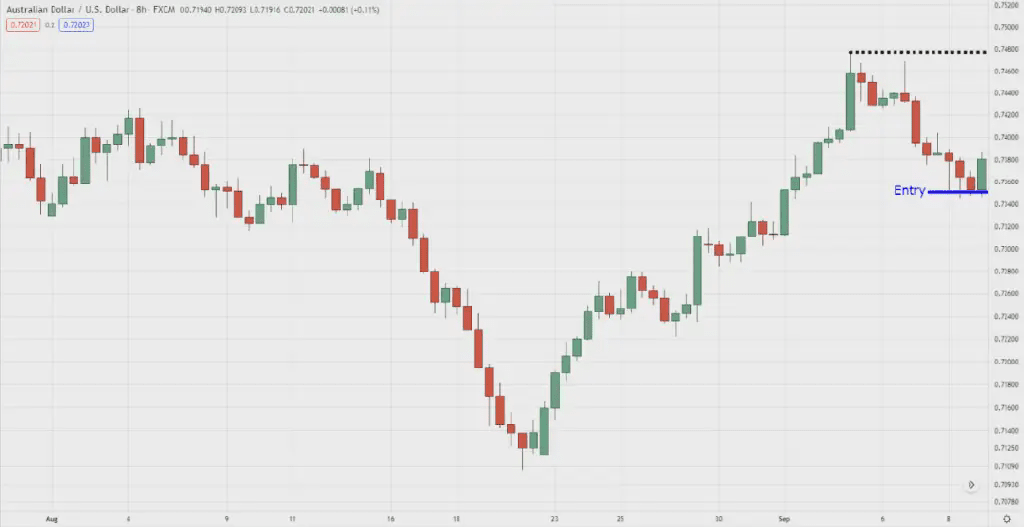
But on the flip side, the downside is that the pullback you enter may not change for a long time, with prices stuck in a range-bound oscillation.
Long-term pullback setup in the daily time frame for NZD/USD:
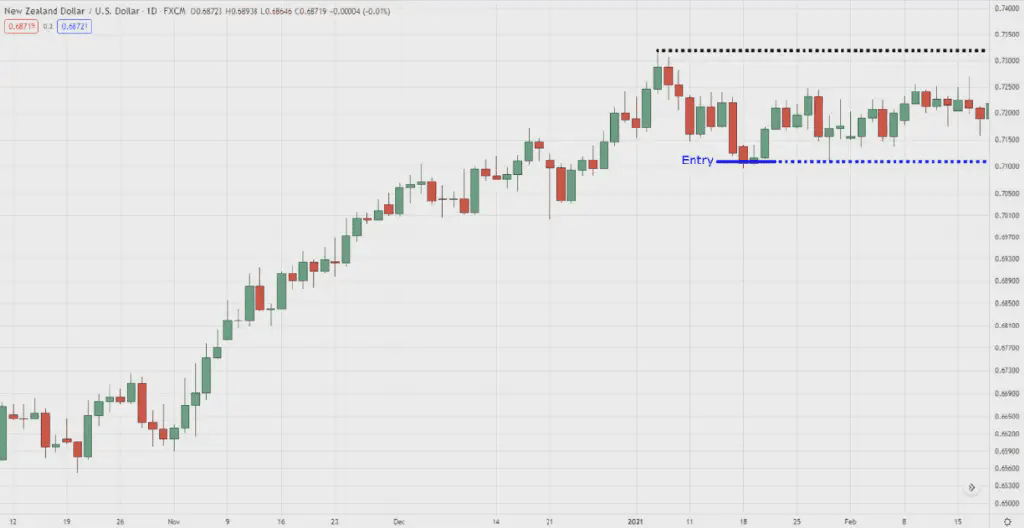
Worse still, a pullback can almost immediately go against you!
Failed pullback setup in the 8-hour time frame for AUD/USD:
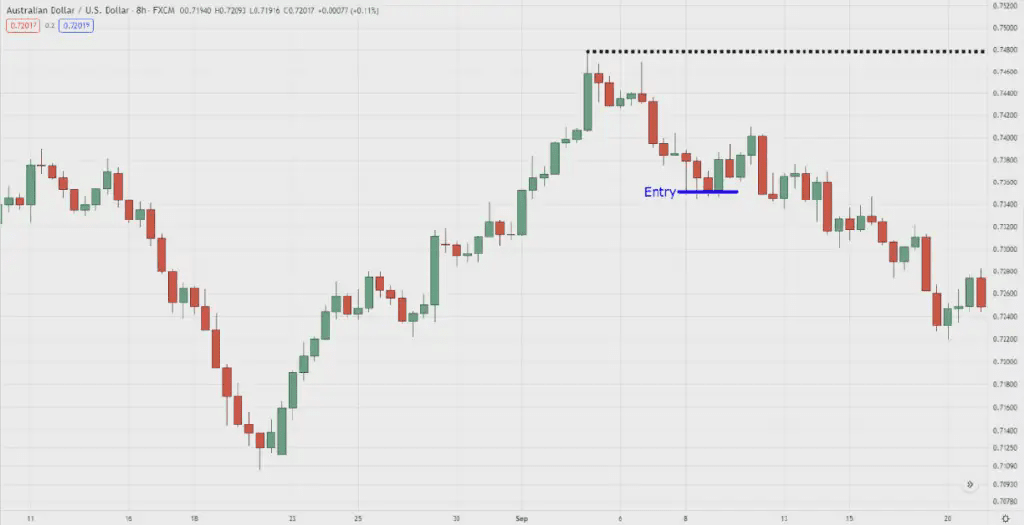
Now you should have noticed that I not only showed you the advantages but also the disadvantages.
No single strategy or chart pattern can be effective all the time!
Therefore, you should weigh these pros and cons before deciding which trading setups to use.
3. Trade Management
Determining how to use bullish candlestick patterns as entry will depend on your trading setup.
For example:
If you are trading breakouts, ensure that the candlestick at the breakout is bullish relative to the previous candlesticks.
Strong breakout in the daily time frame for USD/ZAR:
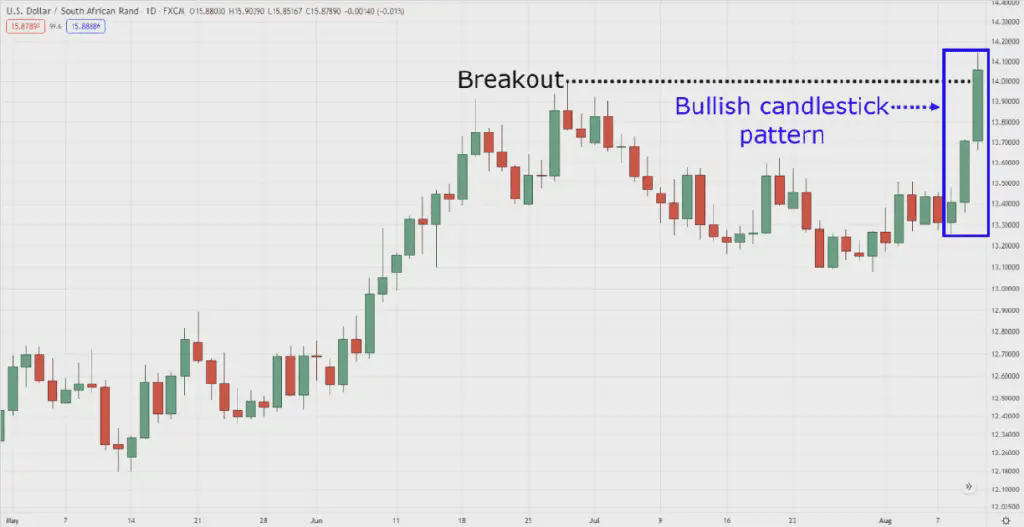
You could say that the candlestick in the above image is a variant of the 'three white soldiers' candlestick pattern. But the main highlight here is that the third breakout candlestick is more prominent than the others!
If you are trading pullbacks, this concept couldn't be more important.
Because if you are willing to trade at lower points, you hope to see a bullish candlestick pattern before making a trade.
Pullback setup in the daily time frame for USD/CNH:
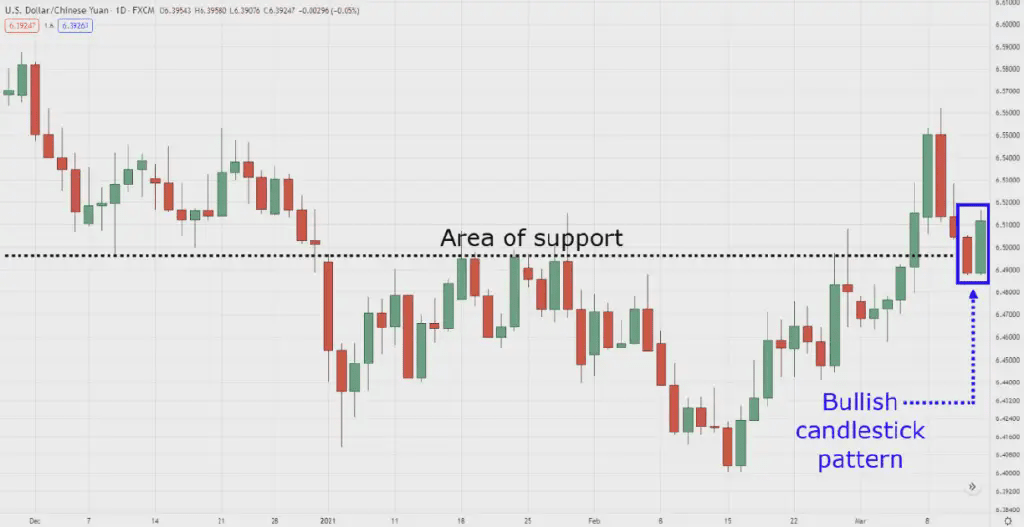
Exit now.
The key here is that how you exit a trade should depend on the trading method you choose.
Therefore, if you are a swing trader, consider taking profits before the resistance area.
Swing trading setup in the daily time frame for USD/CNH:
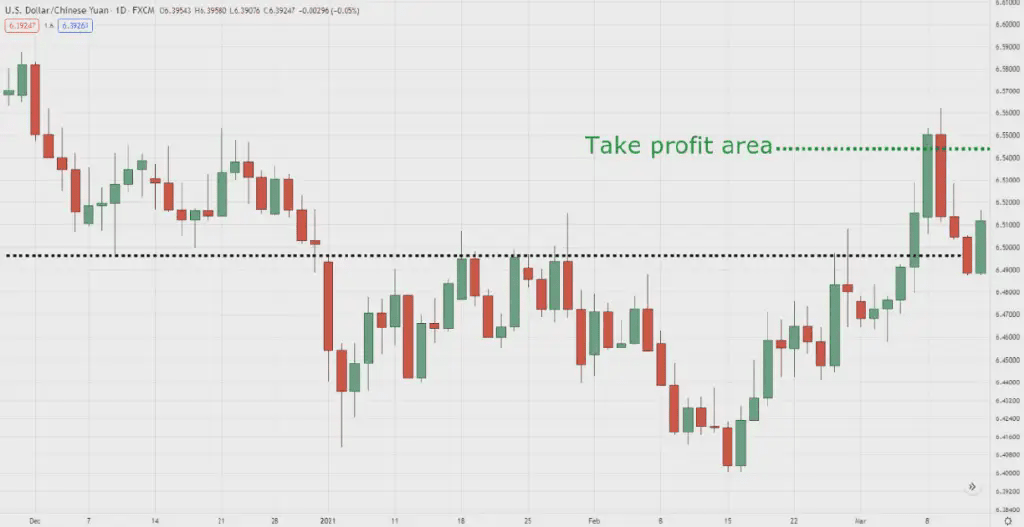
As a trend follower, using trailing stops is more important than obtaining fixed target profits.
Trend following setup in the daily time frame for USD/ZAR:
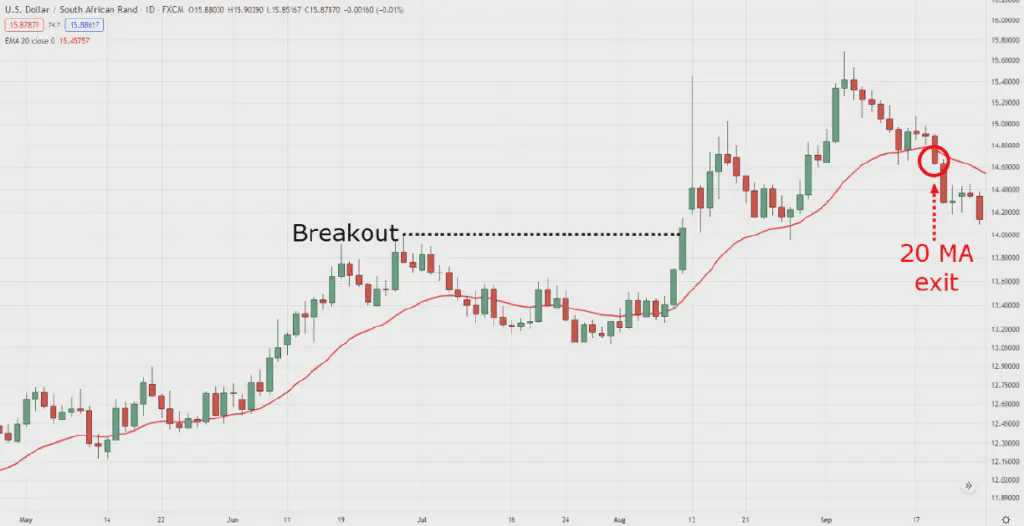
I know it does not show any bullish candlestick patterns.
However, if I teach you how to enter trades instead of how to exit trades, that would not be fair, right?
Nevertheless, the conclusion is this:
Bullish candlestick patterns should never be traded in isolation because bullish candlestick patterns themselves are not a complete strategy.
You may be thinking:
"Okay, so if bullish candlestick patterns themselves are not a strategy, how about showing me a strategy!"
Don't worry.
I will share several complete strategies for trading using bullish candlestick patterns.
Strategy #1: Stock Market Trend Following
I believe you know there are thousands of stocks out there—that's why you need to filter for 'quality' stocks using filters like finviz.
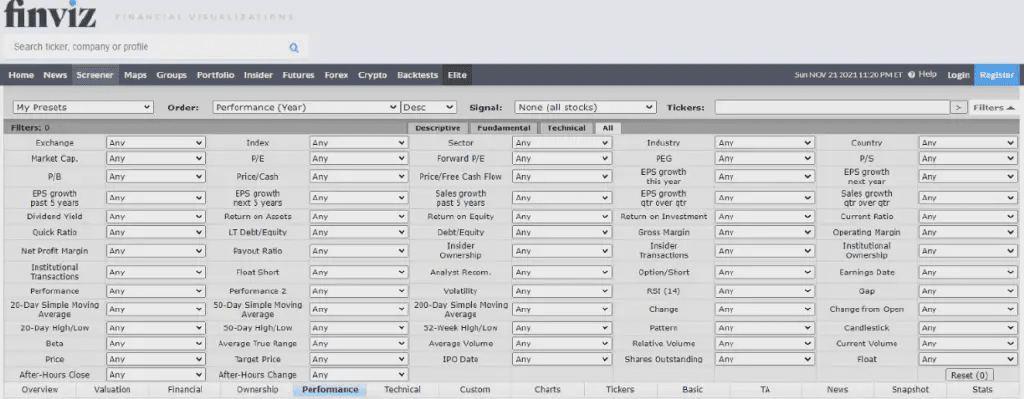
At first glance, it looks like entering an airplane cockpit without knowing which button to press.
But the key here is to understand what your trading method is, and then choose the relevant parameters that align with your trading method's goals.
In this case, we will look for stocks that have performed well and have good trading volume and growth potential (small-cap stocks)...
Finviz filter parameters:
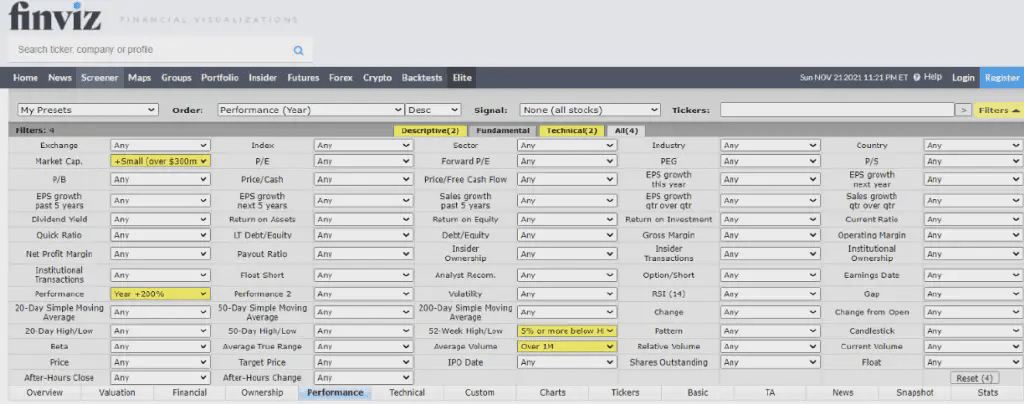
Next, you should look for setups in the top 10 stocks on the list, prioritizing those that have performed best so far.
Finviz filter results:
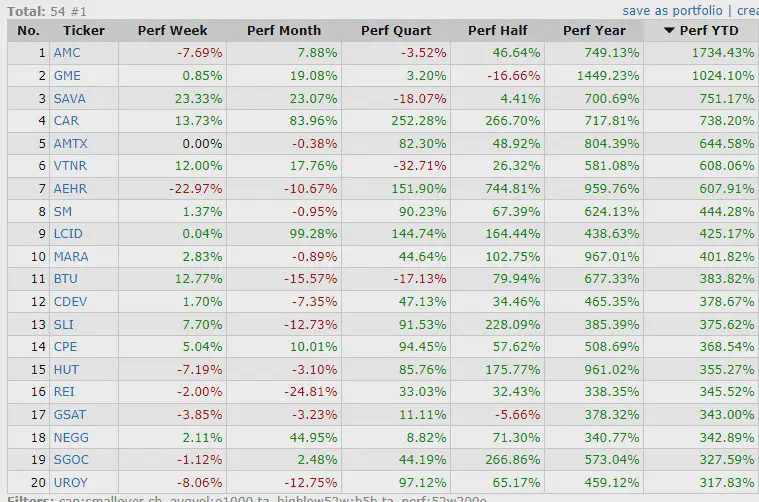
So you may ask, what are the setups?
If you are a trend follower, consider using breakout entry setups.
Breakout setup in the daily time frame for GameStop (GME):
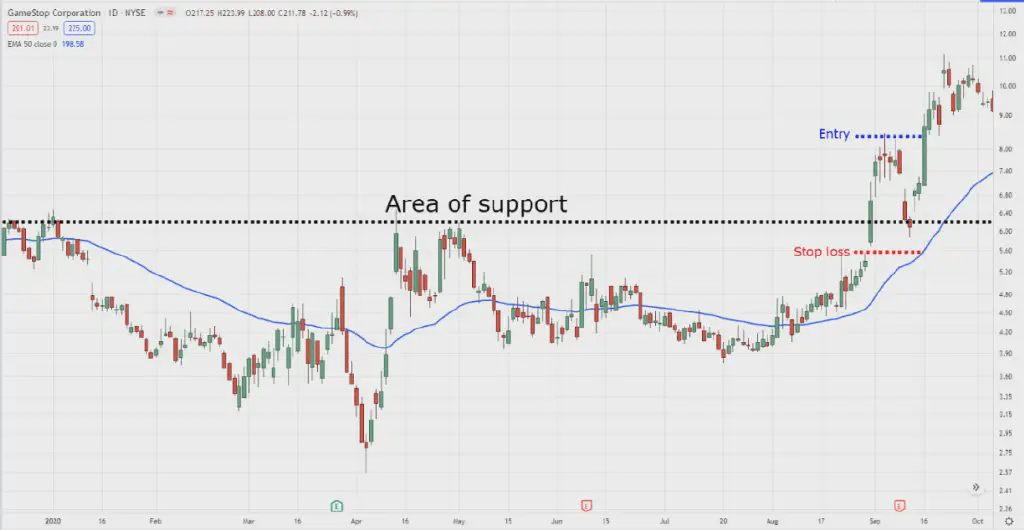
Please note how the bullish candlestick pattern broke out before we entered the trade.
Because if it shows a small or hesitant candlestick, then you will ignore the trade!
As for exiting, consider using the 50-period moving average as a trailing stop.
Breakout setup in the daily time frame for GameStop (GME):
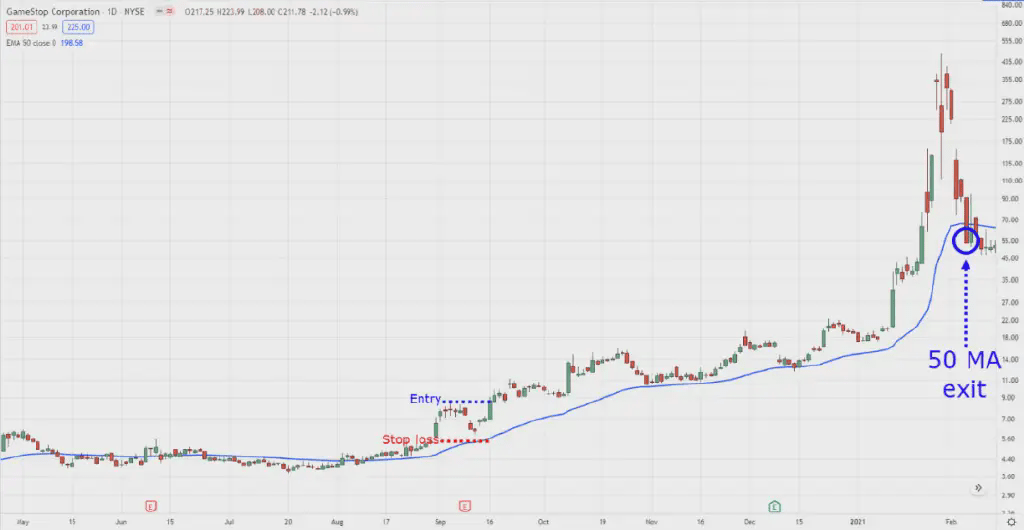
Of course, being a trend follower does not mean you are limited to breakout setups.
You can also consider entering on a pullback and then selling half of your position before the breakout point.
Pullback setup in the daily time frame for CAR:
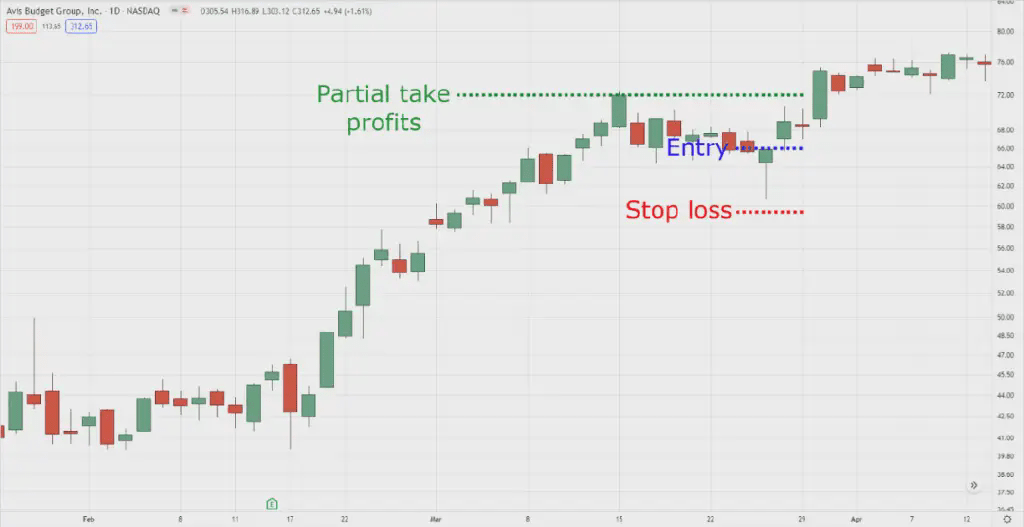
Finally, trailing stop loss.
Trailing stop loss in the daily time frame for CAR:
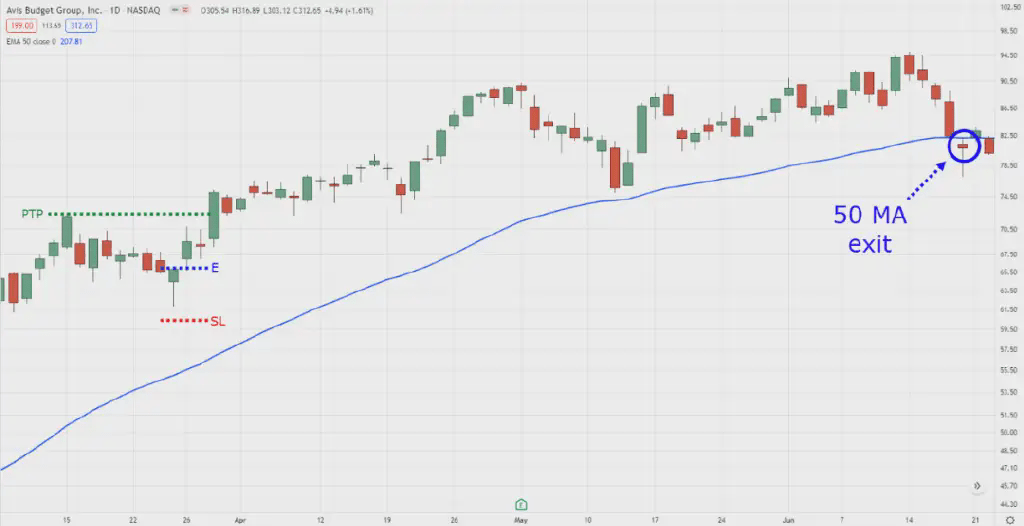
Strategy #2: Forex Market Swing Trading
Compared to the stock market...
We cannot only use filters because there may be less than 100 currency pairs.
Instead, we will use a currency strength chart.
Currency strength chart results:
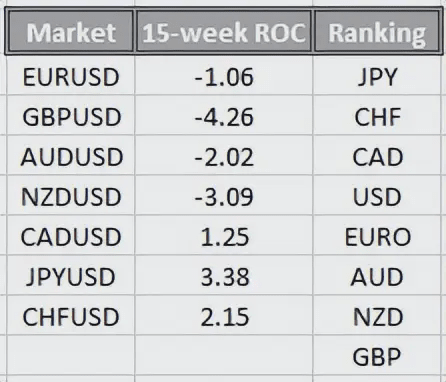
How do we use it?
It's simple, pair the strongest and weakest together, then trade!
If you are a swing trader in the forex market, you might consider waiting for the price to reach a certain value zone.
Swing trading setup in the 4-hour time frame for EUR/CHF:
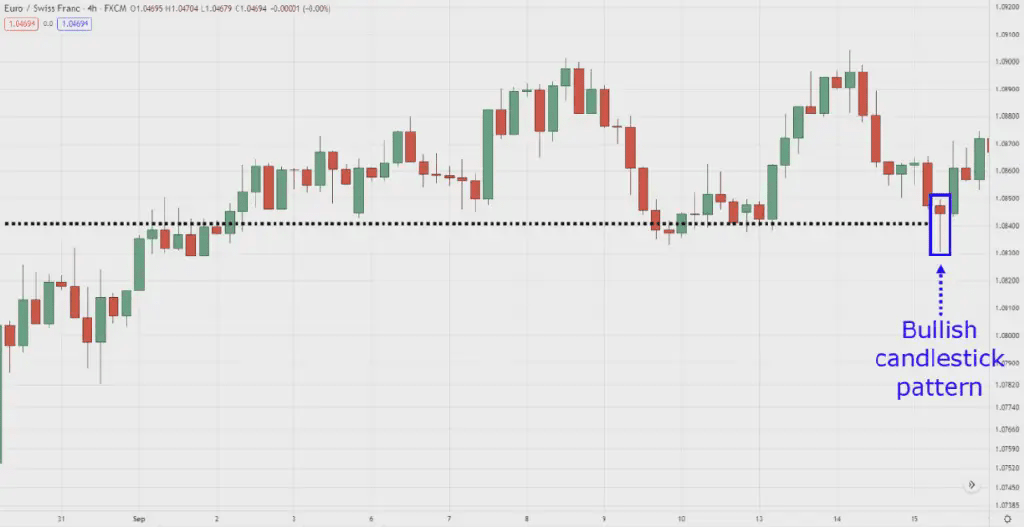
Note again, how do we wait for prices to form bullish candlestick patterns before entering trades?
Finally, you may consider taking profits before selling pressure comes and before resistance.
Swing trading setup in the 4-hour time frame for EUR/CHF:
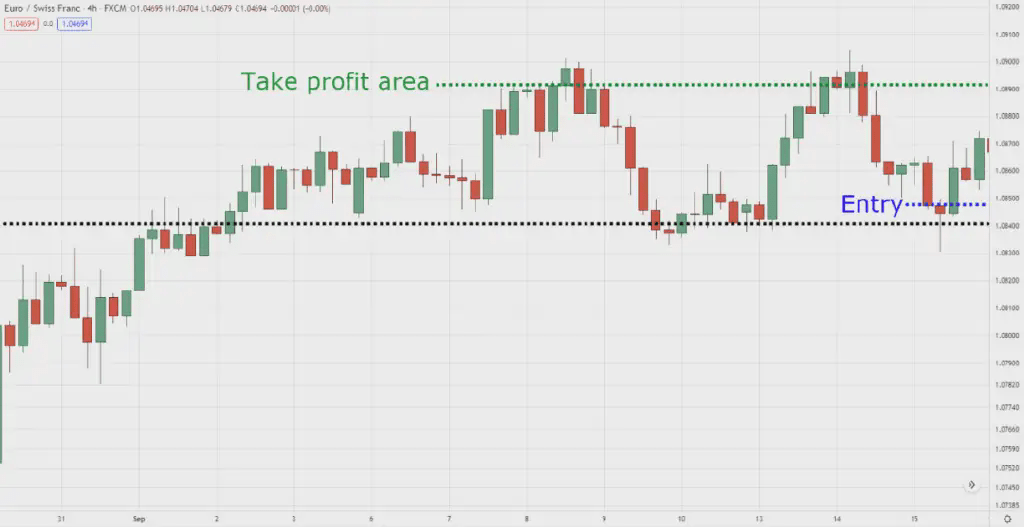
Strategy #3: Cryptocurrency Market Trend Following
At this rate, almost all new types of cryptocurrencies are appearing in the crypto market.
Sadly, they have been hyped and eventually turned into scams, just like the boom and bust!
How do you avoid this?
It's simple, focus on the top 20 cryptocurrencies by market capitalization.
CoinMarketCap Filter Results:

I have only shown 10 examples here; if you want to see more, I suggest you check CoinMarketCap.
You see... the longer an existing cryptocurrency has been around, the higher the trust and confidence investors have in that particular cryptocurrency.
As for setups, since the cryptocurrency market tends to rise... becoming a trend follower may be beneficial.
Breakout setup in the daily time frame for MATIUSDT:
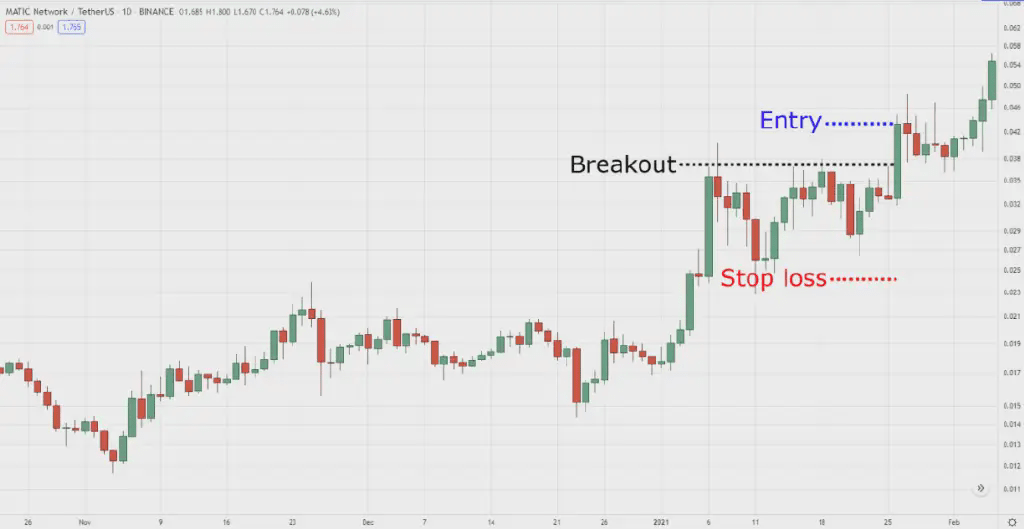
Most importantly, the cryptocurrency market tends to develop rapidly, so using a 20-period moving average for trailing stops may be beneficial.
Breakout setup in the daily time frame for MATIUSDT:

Disclaimer
Now, I will share some strategies with you.
Therefore, I must clarify that before considering trading with real money using one of these strategies, you must first conduct backtesting and simulation trading.
Finally, another important consideration is risk management, as it can determine whether you can survive in trading in the long run!
Contracts are not shortcuts, they are magnifying glasses: if you can't hold steady, they magnify your mistakes.
When I first got into contracts, I thought I had found a shortcut to doubling my money. What happened? Within a few months, my account was down to nothing, going through several liquidations, and I was stuck, unable to sleep or eat, and kept adding positions hoping to break even.
Many people start with high leverage, frequently entering and exiting, chasing highs and cutting lows, and within a few rounds, they are drained by fees and adverse market movements. Some even get wiped out when the market drops suddenly.
The beginning of my turning point was when I restrained myself from betting on direction.
I have set a few rules for myself:
Leverage should not exceed 5 times; if the direction is unclear, it is better to stay out.
Before entering, look at these three points: technicals, funds, and sentiment.
Only trade clear trend-following positions; do not guess bottoms or tops.
Once in profit, push according to the plan; do not hold, do not be greedy, do not add ambiguous positions.
Thus, I rolled up round by round. I didn't rely on a single windfall, but on a clear rhythmic approach: small position building, increasing bets on upward moves, holding steady on pullbacks, and taking profits on breakouts.
Having a right plan is essential for truly profiting in this market; having a team behind you is far better than working hard alone.


